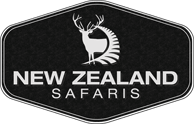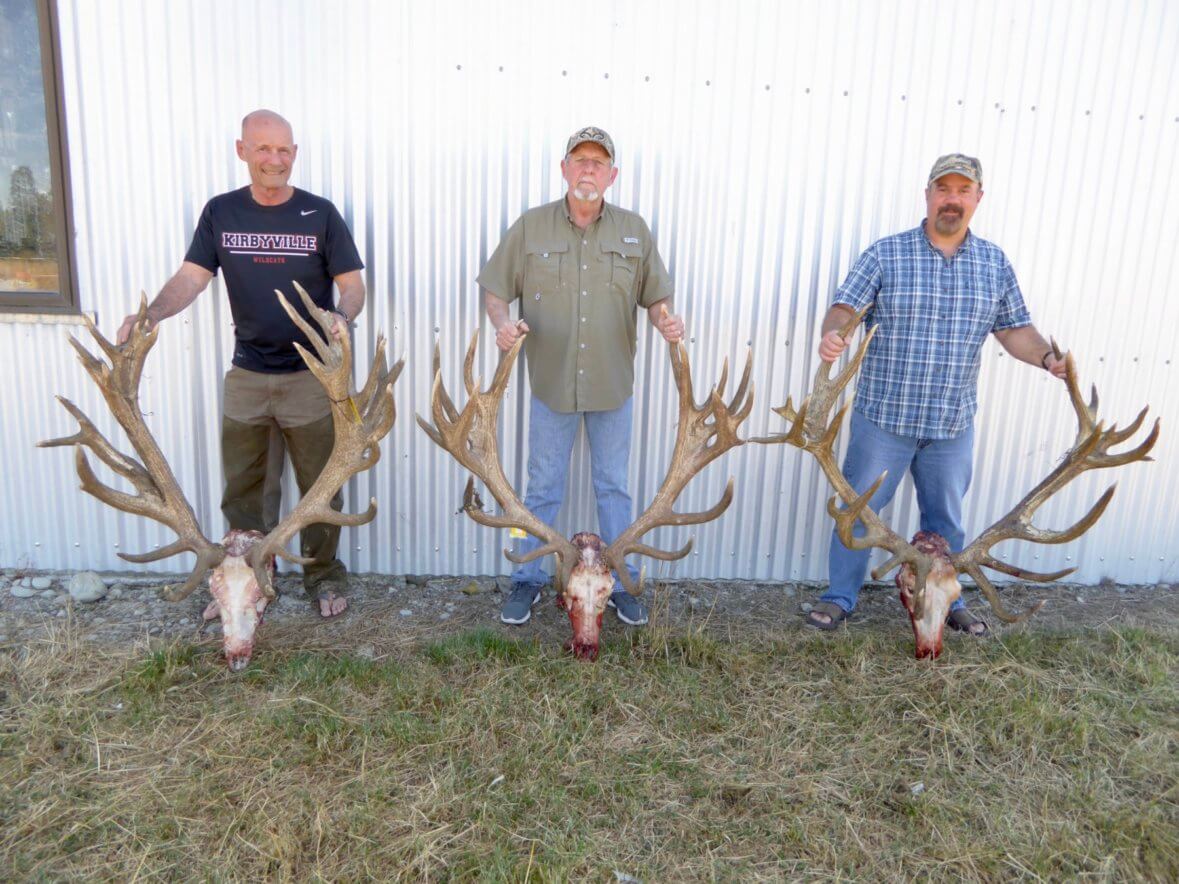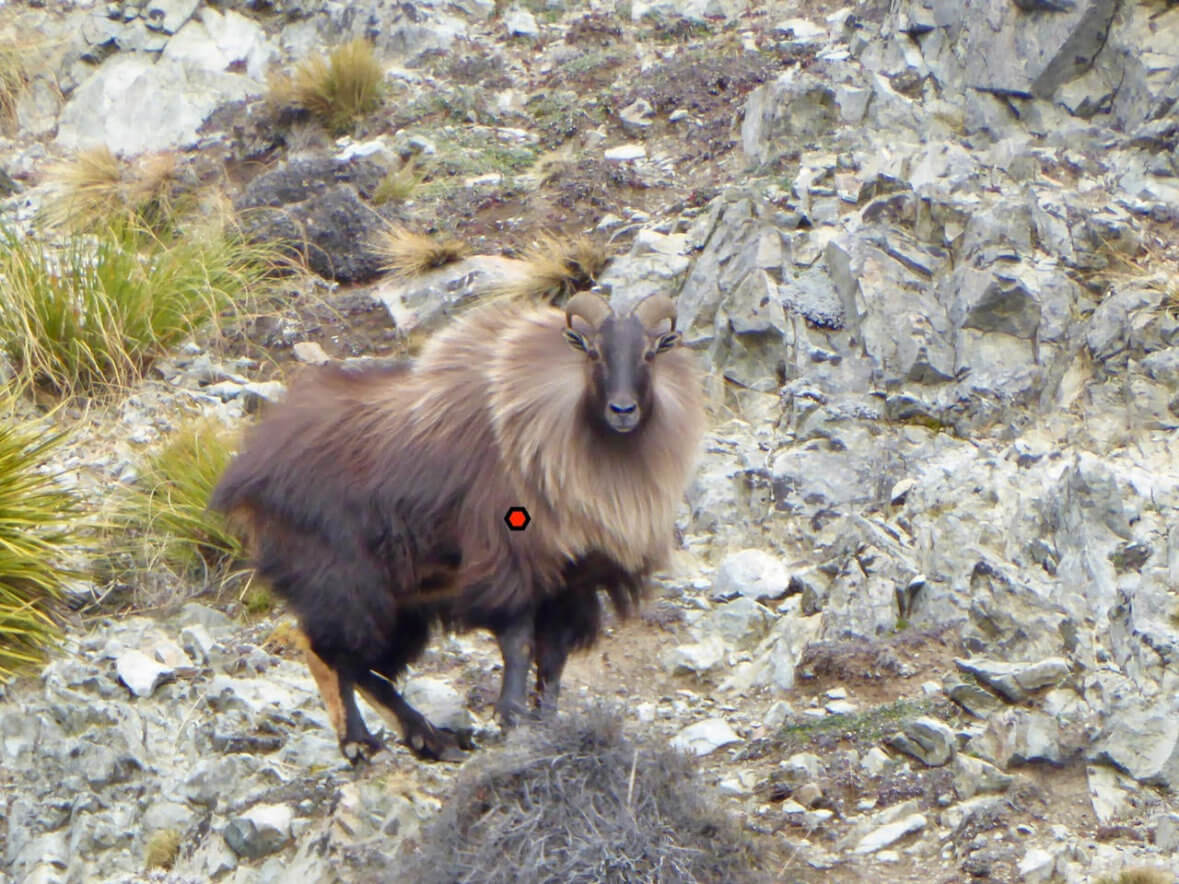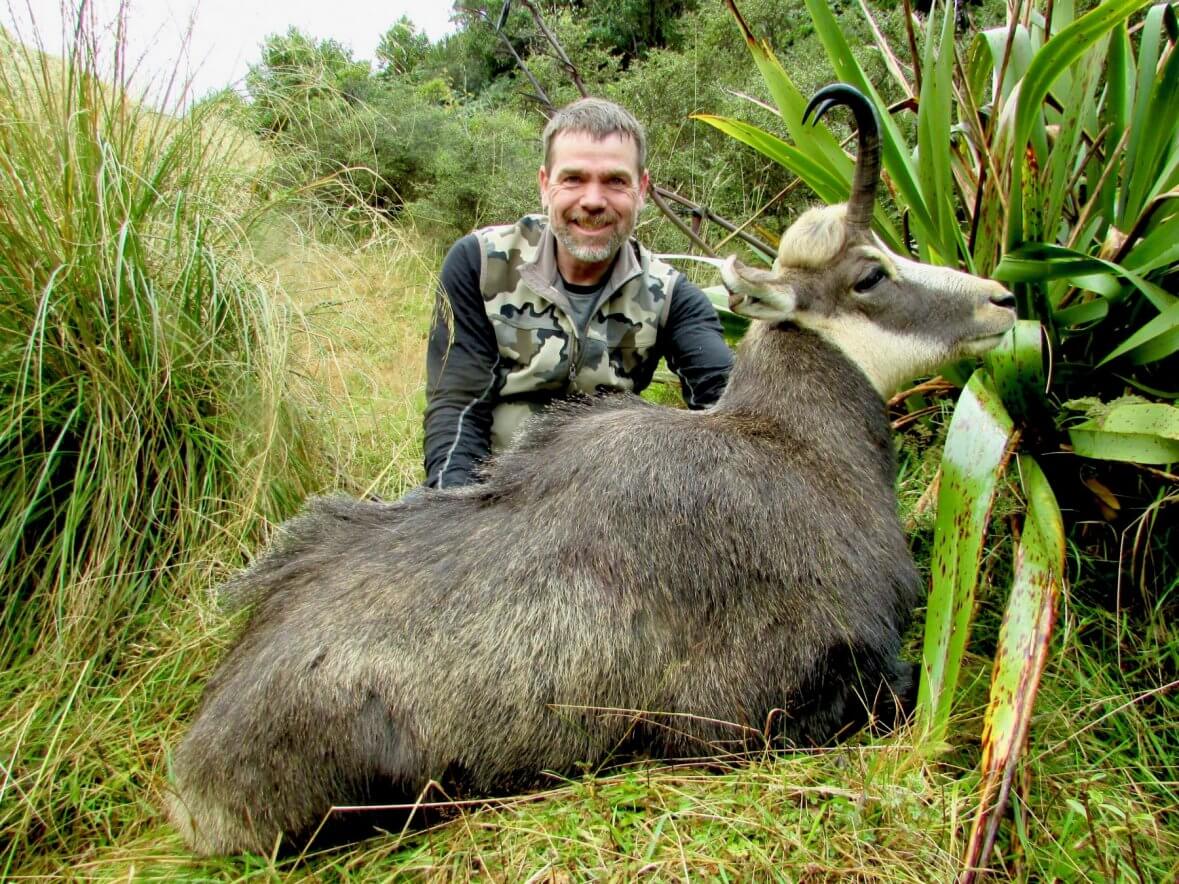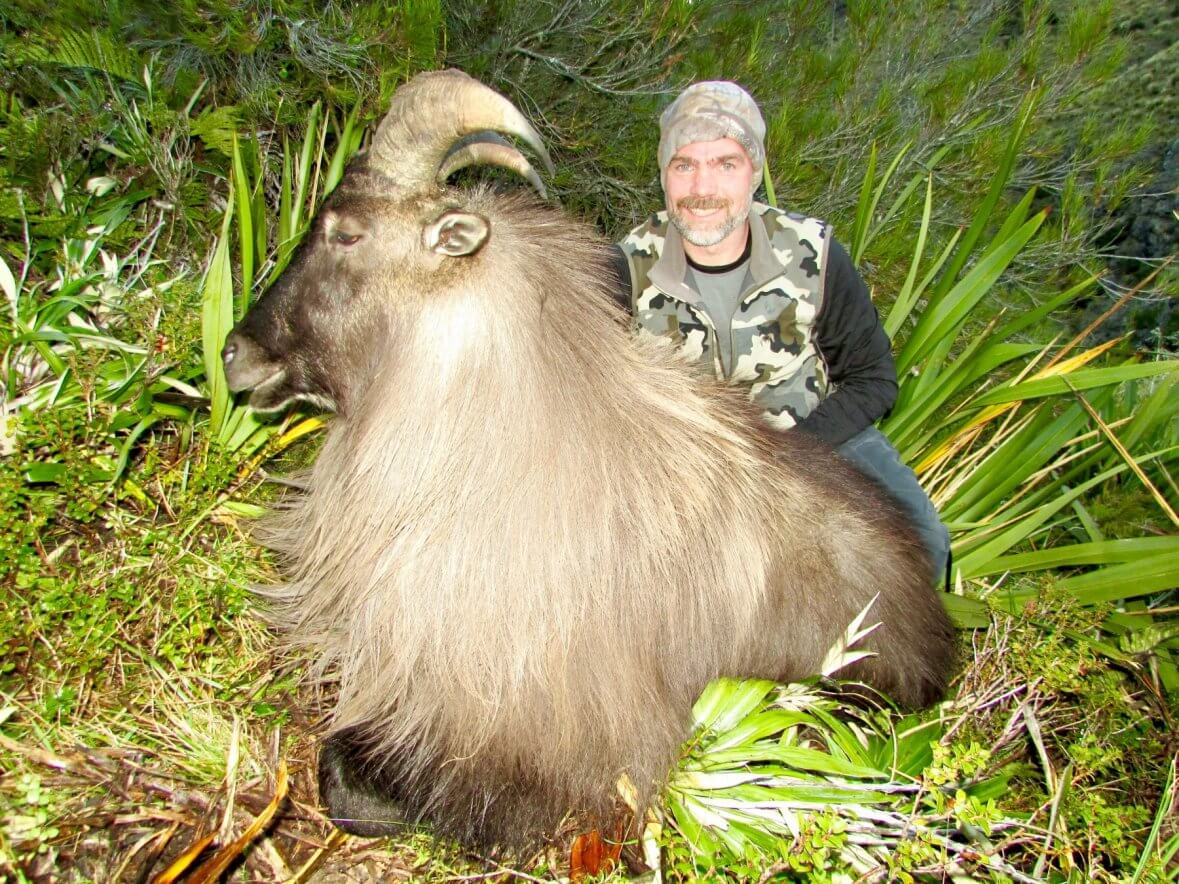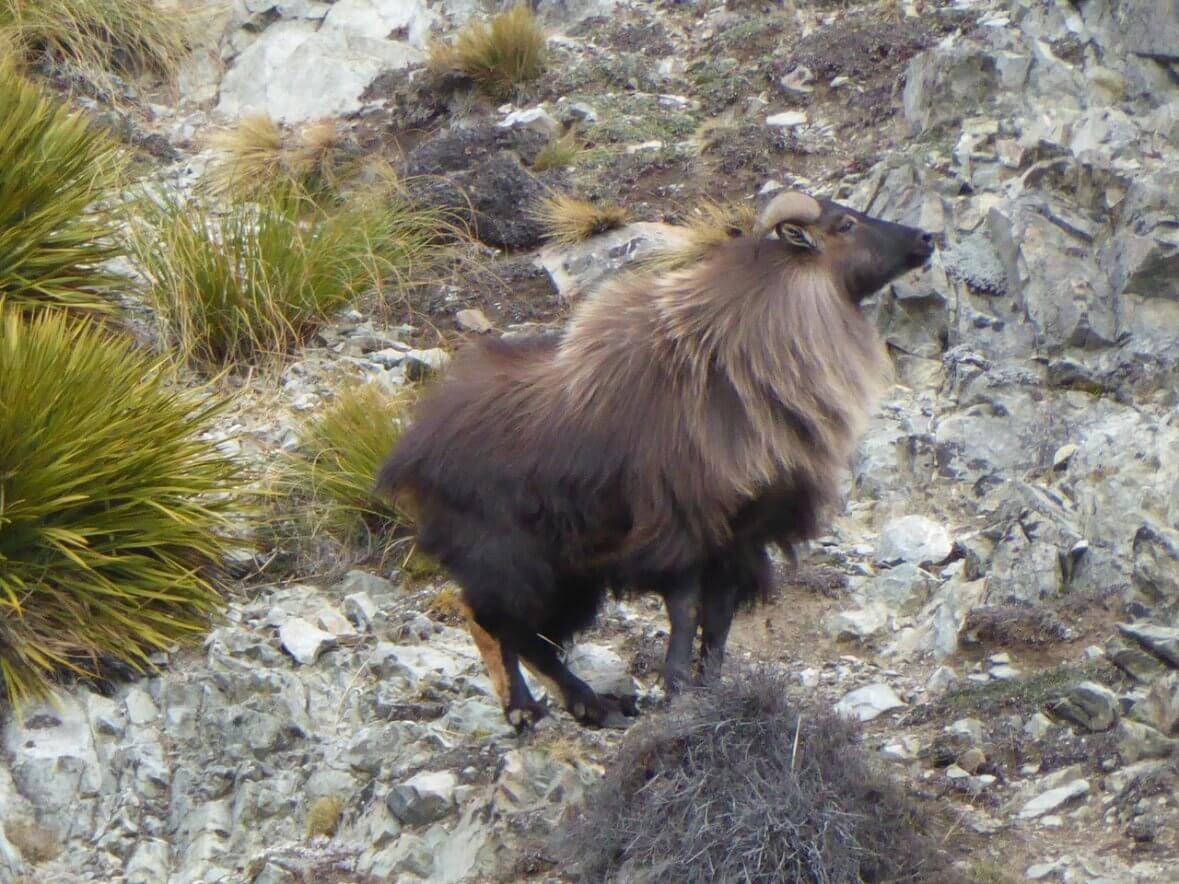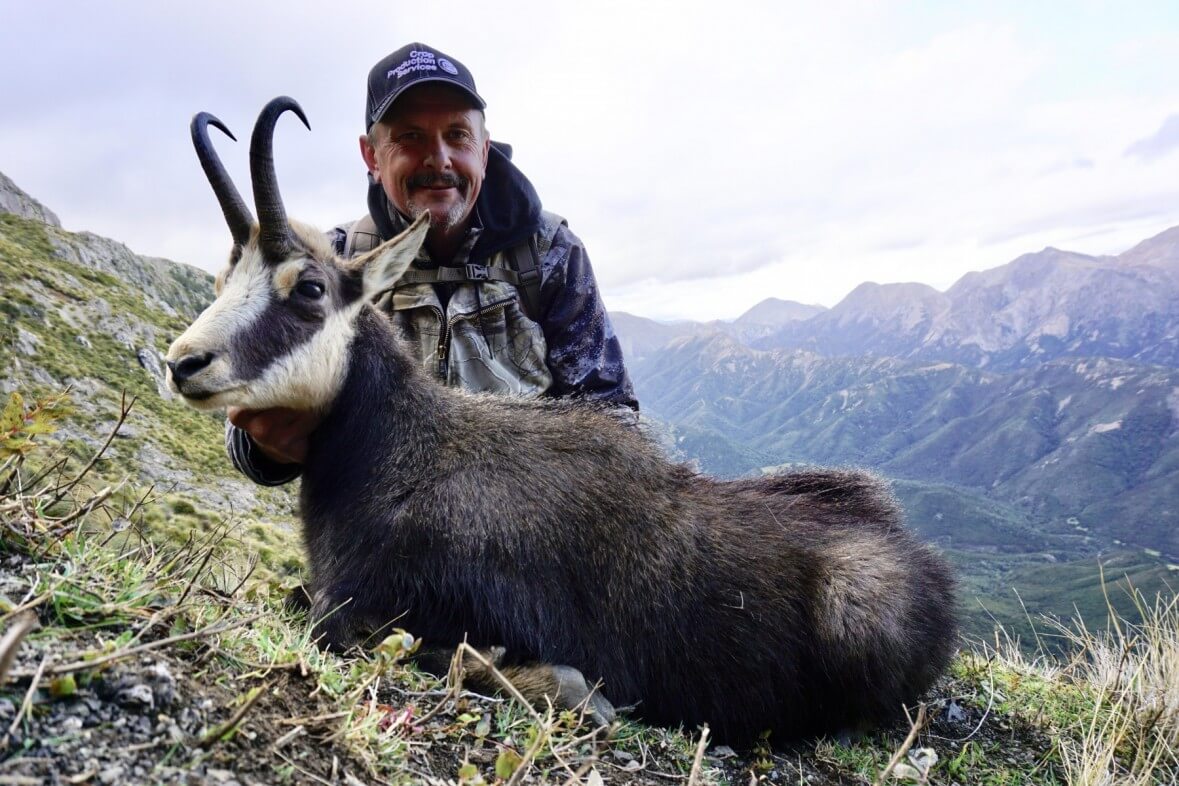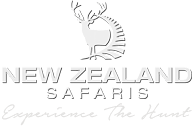A Tahr (Hemitragus jemlahicus) are large goat-like animals, native to the central Himalayan ranges of India and Nepal. In New Zealand tahr are found in the central Southern Alps between about the Rakaia and Whitcombe valleys in the north to about Lake Hawea in the south. The main population today of Tahr still exist around the Mt Cook area in the central South Island.
Tahr are also known as and called Himalayan Tahr. Tahr are originally from Nepal they were gifted to New Zealand over 100 years ago for sport They have found the Southern Alps of the South Island ideal habitat. The Himalayan Tahr was introduced to the central South Island of New Zealand. Specifically the Mt Cook area which also happens to be the home of New Zealand Safaris.
Tahr are generally found in the alpine grassland zone, where they graze on snow tussocks, alpine herbs and sub-alpine shrub-land plants.
The male tahr’s summer coat is a reddish-brown, females a medium brown, both turning dark brown in winter. The bull tahr has an impressive mane of long hair around the neck and shoulders.
Tahr are popular with recreational and international hunters for their horns, the male’s striking mane, and for the experience of this mountain like goat hunt.
Tahr are social animals and form easily recognisable groups. Adult females, yearlings and kids gather together, males over 4 years form bachelor groups, and younger males hang out together in separate, smaller groups. Males mix in with the females in their range over the winter breeding season but during the summer months they often travel long distances away from the female groups. A mature male is considered 6 years or older which you can count by his rings on his horns which is a trophy Bull. Tahr can be hunted both on government land or private land. With the culling operations that are presently happening hunters after a quality experience have now learnt that private land is far more successful in taking mature trophy Bulls with a recognised outfitter like New Zealand Safaris, over hunting against other hunters and helicopters on public lands in the same areas.
A male Bull Tahr can weigh up to 300 pounds and will hold up to 50 nannies and kids during the rut. The tahr rut normally happens in May-July. Bull Tahr will get older and will have longer horn growth when then inhabit privately owned, free range areas where the hunting is well managed. These animals have the ability to come down to lower areas to feed on sweet grasses unlike the tahr you will find on public or government land.
Today Tahr are found along the Southern Alps of the South Island but more specifically centralised in the middle part of the South Island still today in the Mt Cook, Mackenzie region.
One of the most common questions we hear is, how much is a red stag hunt in New Zealand? There are lots of factors that will effect the price of a red stag hunt – public or private land, professional outfitter or DIY, size of the animal, accommodations to name a few. Most Red Stag hunts with professional outfitters will start around USD $5500 per hunter in 2 hunters x 1 guide. This will often include 5 days of hunting, 4 nights of accommodation and trophy fees for 1 Red Stag up to 350 inches or 1 wild and free range Red Stag.
So how much is a red stag hunt at At New Zealand Safaris? Our base Red Stag hunts starts at $5500 which is conducted all on privately owned land, where we have exclusive hunting rights.
As you research you will find Red Stag hunt prices in New Zealand can vary depending on the hunting outfitter and quality and experience of the hunt someone is looking for.
If you are interested in larger stags or combination packages please contact us.
Bull Tahr would have to be pound for pound one of the toughest big game mountain animals to bring down.
The bull tahr is difficult to bring down for two reasons, the long hair over their body and their bone structure.
Pre-rut some of the Bulls in their prime will weigh in excess of 300 pounds especially on private land where they are typically not hunted during the summer months. Due to the lack of hunting pressure tahr will come down to the lower country and graze in sheep and cattle country on fresh spring clover grasses. This is where you must use larger centre fire calibers such as the magnums or 30 caliber with bonded bullets to hunt these amazing animals ethically. The hair in winter is thick and matted, with extremely tough skin up to 1/2 inch thick making this combination very tough and shot placement becomes critical.
The shoulders of a tahr are well muscled and larger than their back end, you are shooting into the power house so take your time as you line up your shot placement as you will only get one vital shot, the rest will be just throwing lead. When Tahr hunting ideally you will have an experienced professional guide or spotter with you that has extensive knowledge of these animals. This will allow you the hunter time to concentrate on the proper set up of the rifle and the shot with the guide ranging distance, body angle, and ideal shot placement. You need to break both shoulders and puncture lungs, or at least one shoulder both lungs, yes they are just that tough. A shot back into the green lung (stomach), missing the vitals and or only hitting the shoulders will result in a wounded and lost Bull.
Take your time aiming small and steady, reload and get ready for a follow up shot this is not the animal to chase. On a mature Bull Tahr, 6 years or over older the hair in winter can hang 9-12 inches down over the leg, 6-9 inches over the bottom of the chest, and 3-9 inches on top of the shoulder.
While on his second tahr hunt with New Zealand Safaris, Reece added a free ranging, wild foot chamois hunt.
Reece took an exceptional 9 inch 10 year old Chamois Buck during his chamois hunt. We are lucky enough to use roads on these private properties as they are extensive working sheep and cattle ranches.
Chamois are only found in the South Island of New Zealand. Without having to use a helicopter for our chamois hunts means we can move about freely without other hunters in the area and not restricted by weather. Our South Island location mostly allows us the ability to hunt from our lodge each day in a traditional wild chamois hunt.
Chamois lay down false rings on their horns so it is very hard to age but typically you want to see 8-12 rings to take a mature Chamois Buck. This time of year the glands swell as they enter the rut (late-April to mid-June) which you can see directly behind the head. When chamois hunting the easiest way to judge a mature Chamois Buck is his horns do a full curl with the horn tips well above the tips of his ears.
Meet Reece, on his second free ranging and wild on foot tahr hunt with us, on our private land. On this hunt Reece got an 8 year old bull tahr, with 13 inch horns.
These properties have excellent mountain roads which allows us to cater to all levels of hunters. From glaciers to river valleys non-hunters have an opportunity to enjoy the scenery and watch the game.
Our properties are all within 40 minutes of our main hunting lodge, or we can camp out in the back country cabins.
You can tell the age by counting the rings on the horns and the lamb tips. On a tahr hunt, a bull is considered mature and a trophy when he reaches 6 years old. On private land exclusive to New Zealand Safaris animals are not under constant hunting pressure so get time to reach maturity and their full potential which makes for some amazing tahr hunting.
When field judging on a tahr hunt, include factors such as body size, cape and colour are important after length of horns 12+ inches is considered a trophy.
Averaging at 270 lbs these are truly magnificent animals and an amazing hunt in some of the most spectacular scenery you will ever see. If you truly value sheep hunting and the mountains and scenery that go hand in hand with this big game hunt, then you will love hunting with us, many bring the non hunter also to be in these amazing places. If clients would prefer we can utilize a helicopter for access up onto the tops for day hunts.
The rut runs from around late May to the end of July with hunting from February to the end of November. If you are looking to plan a tahr hunt, get in touch with us.
Himalayan Tahr, also known as ‘the king of the mountain’ in New Zealand Bull Tahr are only found in the South Island of New Zealand. The trophy Bull Tahr population heavily concentrated along the central part of the Island both West and East coasts. Judging a trophy Bull Tahr can be tricky in the warmer months, finding them alone can be a real challenge. You really need to look in heavy native cover, the older Bulls will seldom come out at all if it is hot, maybe making it to the fringes at dark and gone by first light. High quality optics are essential, using both binoculars and spotting scope, you pay for what you get in glass so there really is no substitute.
May is the beginning of the chamois rut, and our chamois first foot hunter of the year has arrived from Idaho, USA.
Air New Zealand has just announced that from 30th November 2018 there will be 3 direct flights a week flying from Chicago O’Hare to Auckland. This will be the first ever direct link partnering with United Airlines to the Eastern side of the United States. (more…)
- 1
- 2
